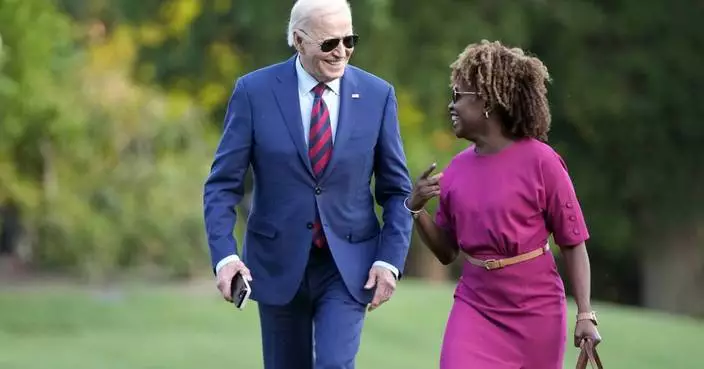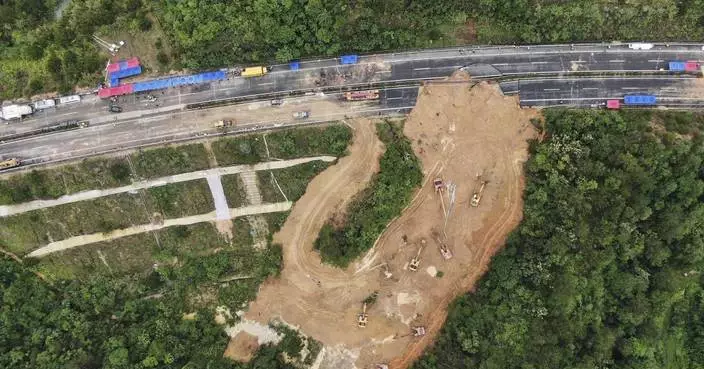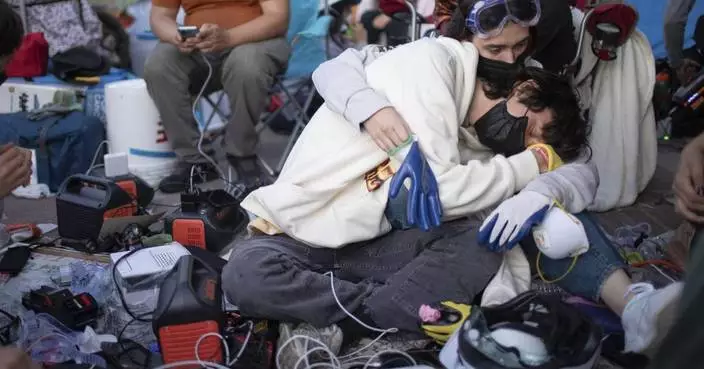Investors and China watchers welcomed President Xi Jinping's pledge Tuesday to open his country's market wider to foreign competition, hoping it will ease a trade dispute with Washington that has unsettled financial markets and could jeopardize a global economic expansion.
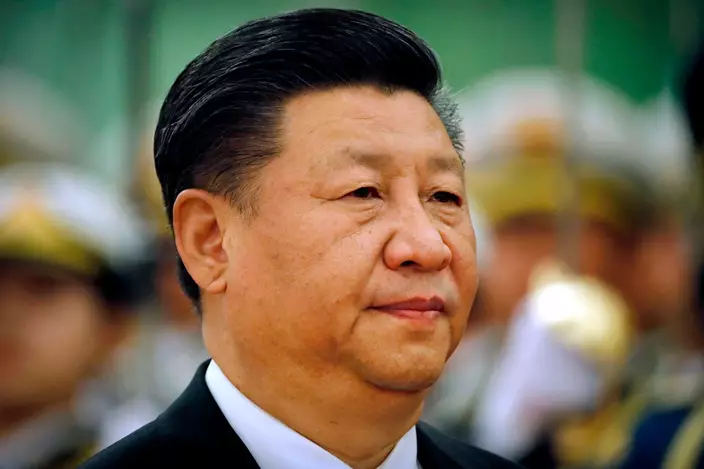
FILE - In this March 29, 2018, file photo, Chinese President Xi Jinping reviews an honor guard during a welcome ceremony at the Great Hall of the People in Beijing. (AP Photo/Mark Schiefelbein, File)
Xi's vow to cut Chinese auto tariffs, allow more competition in banking and better protect intellectual property calmed investors who have been on edge since the world's two biggest economies last week announced plans to slap tariffs on $50 billion worth of each other's products.
Click to Gallery
Investors and China watchers welcomed President Xi Jinping's pledge Tuesday to open his country's market wider to foreign competition, hoping it will ease a trade dispute with Washington that has unsettled financial markets and could jeopardize a global economic expansion.
Xi's vow to cut Chinese auto tariffs, allow more competition in banking and better protect intellectual property calmed investors who have been on edge since the world's two biggest economies last week announced plans to slap tariffs on $50 billion worth of each other's products.
At the same time, Ezell and other longtime China observers cautioned that Beijing has promised in the past to open its market and curb hardball tactics to acquire foreign technology without following through on those pledges.
Within hours, Beijing counterpunched with similar plans to impose tariffs on $50 billion in American products, including soybeans and small aircraft. Then, Trump ordered the U.S. trade representative to consider another $100 billion in Chinese imports to tax.
Still, Sarah Huckabee Sanders, the White House press secretary, told reporters that "we want to see concrete actions from China, and we're going to continue moving forward in the process and in the negotiations until those happen."
Stock markets rallied worldwide on optimism for relief from what has become the most high-stakes trade confrontation since World War II. The Dow Jones industrial average was up more than 400 points in early afternoon trading.
"This is a promising signal that there can be a path forward to address (America's) concerns without a full-on trade war emerging," said Stephen Ezell, vice president of global innovation policy at the Information Technology & Innovation Foundation, a think tank that has criticized both China's aggressive trade practices and President Donald Trump's confrontational response to them.
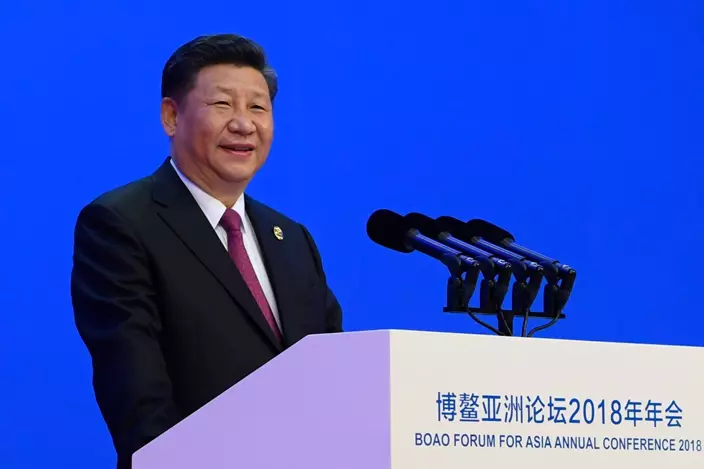
In this photo released by Xinhua News Agency, Chinese President Xi Jinping delivers his opening speech at the Boao Forum for Asia Annual Conference in Boao in south China's Hainan province, Tuesday, April 10, 2018. (Li Xueren/Xinhua via AP)
At the same time, Ezell and other longtime China observers cautioned that Beijing has promised in the past to open its market and curb hardball tactics to acquire foreign technology without following through on those pledges.
"This is positive, but we need to see action," Ezell said.
Speaking at a business conference Tuesday, Xi didn't directly mention either Trump or the trade standoff with the United States. He promised progress on areas that are U.S. priorities, including opening China's banking industry and boosting imports to China. He did not, however, address some key irritants for Washington, including a requirement that foreign companies work through joint ventures that require them to give technology to potential local competitors.
Last week, the Trump administration unveiled plans to impose tariffs on 1,300 Chinese products, worth about $50 billion a year in imports to the United States. It characterized those tariffs as a penalty for Beijing's forcing American companies to hand over technology to gain entry to China's market.

A woman walks by a man sitting outside an American apparel store at a shopping mall in Beijing, Tuesday, April 10, 2018. (AP Photo/Andy Wong)
Within hours, Beijing counterpunched with similar plans to impose tariffs on $50 billion in American products, including soybeans and small aircraft. Then, Trump ordered the U.S. trade representative to consider another $100 billion in Chinese imports to tax.
David Dollar, senior fellow at the Brookings Institution, noted that the United States won't impose its tariffs until after it gives the American public weeks to comment on the plans. That leaves time for the two countries to negotiate.
"You hope that reason prevails," said Dollar, a former official at the World Bank and U.S. Treasury Department. "Every time the administration talks tough, the market drops. And every time the administration says 'We're going to negotiate' the market goes back up."
"The Chinese are not going to make overwhelming changes in the next 60 days," Dollar added. "But maybe the Chinese will agree to a few things, and the Trump team will be able to declare victory."
Trump himself tweeted Tuesday that he was "very thankful" for Xi's comments and praised the Chinese president's "enlightenment."
"We will make great progress together," Trump added.、

A man carries a container past the global fashion chain stores at a shopping mall in Beijing, Tuesday, April 10, 2018. (AP Photo/Andy Wong)
Still, Sarah Huckabee Sanders, the White House press secretary, told reporters that "we want to see concrete actions from China, and we're going to continue moving forward in the process and in the negotiations until those happen."
With his promises Tuesday, Xi sought to position China as a defender of free trade and cooperation despite its being the world's most-closed major economy. He hopes to contrast his softer stance with Trump's "America First" approach, which has focused on restricting imports and renegotiating trade agreements to win better terms for the United States.
"China's door of opening up will not be closed and will only open wider," Xi said at the Boao Forum for Asia on the southern island of Hainan.
Xi said Beijing will "significantly lower" tariffs on auto imports this year and ease rules that limit foreign global automakers to owning no more than 50 percent of joint ventures in China.
He promised to encourage "normal technological exchange" and "protect the lawful ownership rights of foreign enterprises."
Rajiv Biswas, an economist at IHS Markit, said, "This would be a victory for the world trading system and an important step away from the abyss of rising global protectionism."
The dispute is likely to end "with a concession from China," said Larry Hu of Macquarie Group in a report.
Skeptics pointed out that China has made promises before and then not adhered to them.
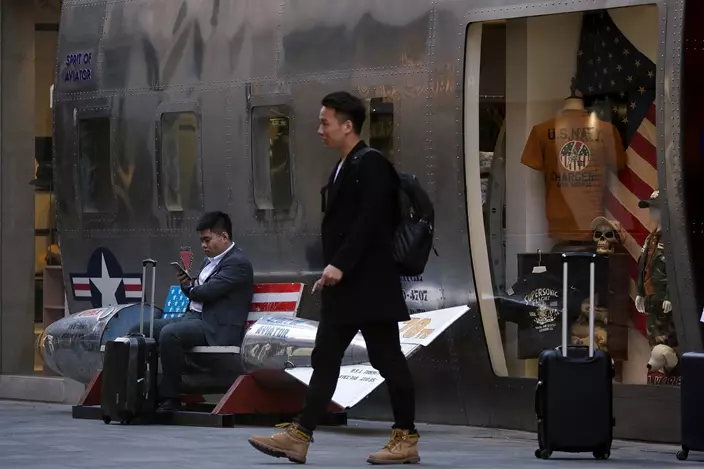
People spend their time outside an American apparel store at a shopping mall in Beijing, Tuesday, April 10, 2018. (AP Photo/Andy Wong)
The Office of the U.S. Trade Representative noted in a report in January that "China repeatedly failed to follow through" on commitments it made in U.S.-China dialogues. In 2010 and 2012, for instance, China declared that foreign companies were free to decide for themselves when to share technology with Chinese partners or other businesses. Instead, the report found, Chinese regulators "continue to require or pressure foreign companies to transfer technology as a condition for securing investment or other approvals."
Also Tuesday, China filed a challenge with the World Trade Organization against Trump's earlier tariff increase on steel and aluminum in a separate dispute. Beijing, which has issued a $3 billion list of U.S. goods including pork and apples for possible retaliation, requested 60 days of consultations. If that fails, China can ask for a ruling from a WTO panel.
But the stakes are higher in the dispute over China's aggressive technology policies. Chinese officials deny that they compel foreign companies to hand over technology. But business groups from outside China argue that joint venture and licensing rules make coerced transfers of technology unavoidable.
Xi gave no details on how conditions might change, leaving unclear how he intends to mollify Washington.
Still, Ezell said he thought Xi's speech suggests that Trump's aggressive moves might be working. Trump has "demonstrated a resoluteness, and that signals to China's leaders that we're serious."
ITBAYAT, Philippines (AP) — U.S. Marines and their Filipino counterparts darted out of Black Hawk helicopters during combat drills Monday in the Philippines’ northernmost island town along the strategic Bashi Channel off southern Taiwan — a flashpoint in the military rivalry between Washington and Beijing.
The show of allied battle readiness in Itbayat in Batanes province is part of annual military exercises that started last month, dubbed Balikatan, Tagalog for “shoulder-to-shoulder,” and involving more than 16,000 American and Philippine military personnel.
This year's exercises by the longtime treaty allies — the largest yet — are meant to deter possible aggression. They come against the backdrop of China’s increasingly assertive actions in the disputed South China Sea, where Chinese and Philippine coast guards and accompanying ships have had several increasingly tense faceoffs since last year.
More than 250 French and Australian forces are also participating, along with observers from several allied and security partner nations, led by Japan and European nations. The drills, which began April 22, end later this week.
In Monday's mock battle scenario, American and Filipino forces took positions at the airfield, ringed by low-lying hills, as three Army CH-47 Chinook helicopters landed to deliver combat supplies.
Marine 1st Lt. Annie Pentaleri said aerial combat reconnaissance and counter-reconnaissance drills were also planned in the far-flung region. The Associated Press was among a small group of journalists invited to attend the maneuvers.
"We are absolutely battle-ready and that’s what we train for day in and day out,” Marine Maj. Robert Patterson said. “It’s important to enhance inter-operability with our Filipino counterparts.”
Washington and Manila say the drills are not directed at any country and are crucial for improving the response to emergencies in the Philippines, one of the world’s most disaster-prone countries.
However, this year's drills focus on territorial defense and are being staged mainly in two of the most sensitive fault lines in the regional rivalry between China and the United States: the disputed South China Sea and the Bashi Channel.
The critical waterway between Taiwan and the Philippines, an important trade conduit laden with international undersea cables, has been closely watched and guarded by Chinese and American forces. China considers Taiwant a part of its territory, to be annexed by force if necessary.
In a telephone call last month, Chinese President Xi Jinping stressed to President Joe Biden that Beijing will not tolerate separatist activities by Taiwan’s independence forces, as well as “exterior indulgence and support,” an apparent reference to Washington’s support for the island.
Biden raised concerns about China’s actions in the South China Sea, including efforts to impede the Philippines, which Washington is treaty-obligated to defend, from resupplying its forces on the fiercely disputed Second Thomas Shoal.
Derek Grossman, a senior defense analyst at RAND Corporation, said the message of deterrence was important. Philippine President Ferdinand Marcos Jr.'s decision to allow U.S. forces indefinite access to two Philippine air force and naval bases in Cagayan province near Batanes under a 2014 defense pact, “would likely upgrade the U.S. military’s ability to intervene in a Taiwan contingency in a more timely manner," he said.
"Right now, a big concern is the U.S. simply won’t get there in time,” Grossman added.
The Balikatan exercises have included live-fire drills in the disputed South China Sea during joint naval sails by the U.S., France and the Philippines. An aircraft also dropped food and other supplies on a disputed island occupied by Filipino forces as part of the maneuvers in the disputed waters.
Separately on Monday, U.S. and Philippine forces practiced repelling invading forces in the coastal province of Ilocos Norte by firing missiles and artillery rounds on floating targets at sea. The northwestern province faces the South China Sea.
“It was a huge success, the weapons were spot on,” Marine Lt. Gen. Michael Cederholm said.
In escalating high-seas encounters in disputed areas, Chinese coast guard vessels have resorted to water cannons, blocking and other dangerous maneuvers that have left Philippine navy personnel injured and supply boats damaged. The Biden administration has repeatedly warned the U.S. is obligated to defend the Philippines, its oldest treaty ally in Asia, should it come under attack.
China has strongly criticized the exercises, saying the Philippines and countries outside Asia are joining forces against Beijing, warned that the drills could lead to confrontation and undermine regional stability.
Ahead of the drills, China specifically opposed the transport of a U.S. ground-launched missile system to the northern Philippines. No missile was to be fired as the goal was only to familiarize military participants with the hi-tech weaponry in a tropical setting.
Chinese Foreign Ministry spokesperson Lin Jian expressed China’s grave concern over the deployment of the missile system “at China’s doorstep."
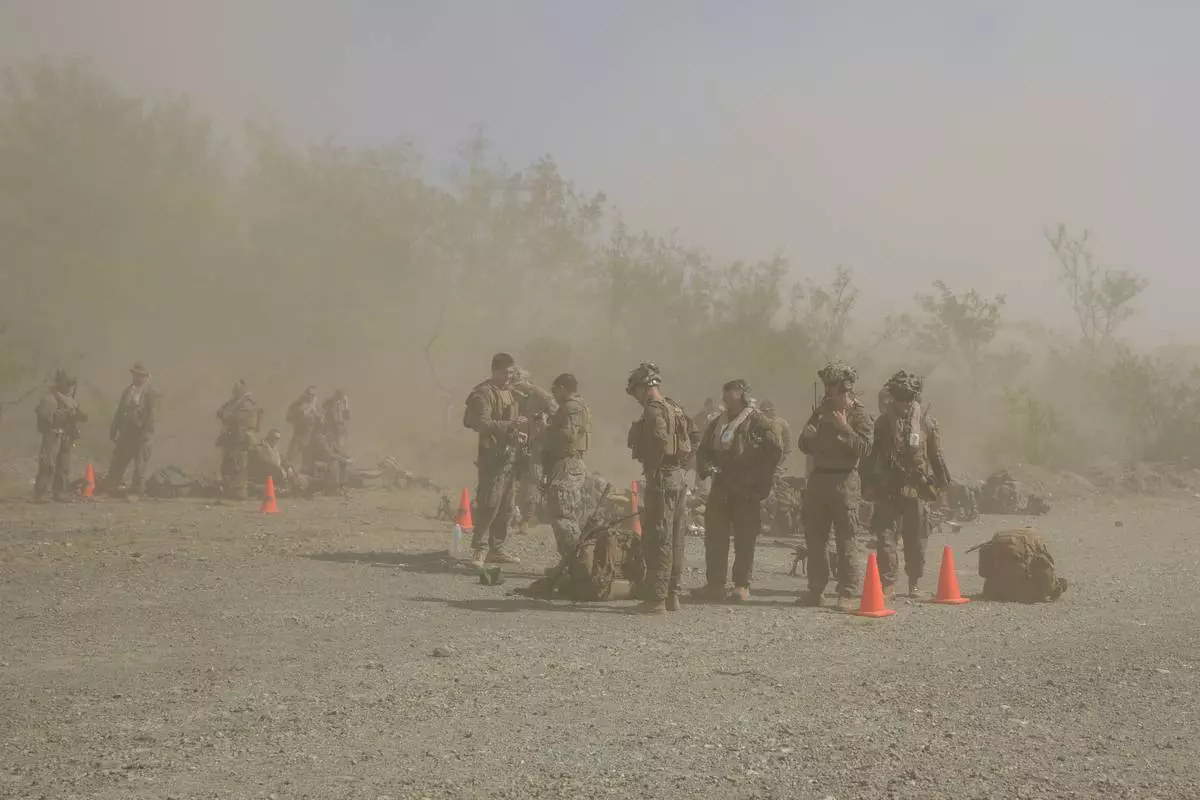
Dust envelopes U.S. and Philippine marines as a U.S. military helicopter takes off at the Paredes Air Station at Pasuquin, Ilocos Norte province as it carries US and Philippine troops during a joint military exercise in northern Philippines on Monday, May 6, 2024. American and Filipino marines held annual combat-readiness exercises called Balikatan, Tagalog for shoulder-to-shoulder, in a show of allied military readiness in the Philippines' northernmost town facing southern Taiwan. (AP Photo/Aaron Favila)

U.S. marines secure an area at the airport of the Philippines' northernmost town of Itbayat, Batanes province during a joint military exercise on Monday, May 6, 2024. American and Filipino marines held annual combat-readiness exercises called Balikatan, Tagalog for shoulder-to-shoulder, in a show of allied military readiness in the Philippines' northernmost town facing southern Taiwan. (AP Photo/Aaron Favila)
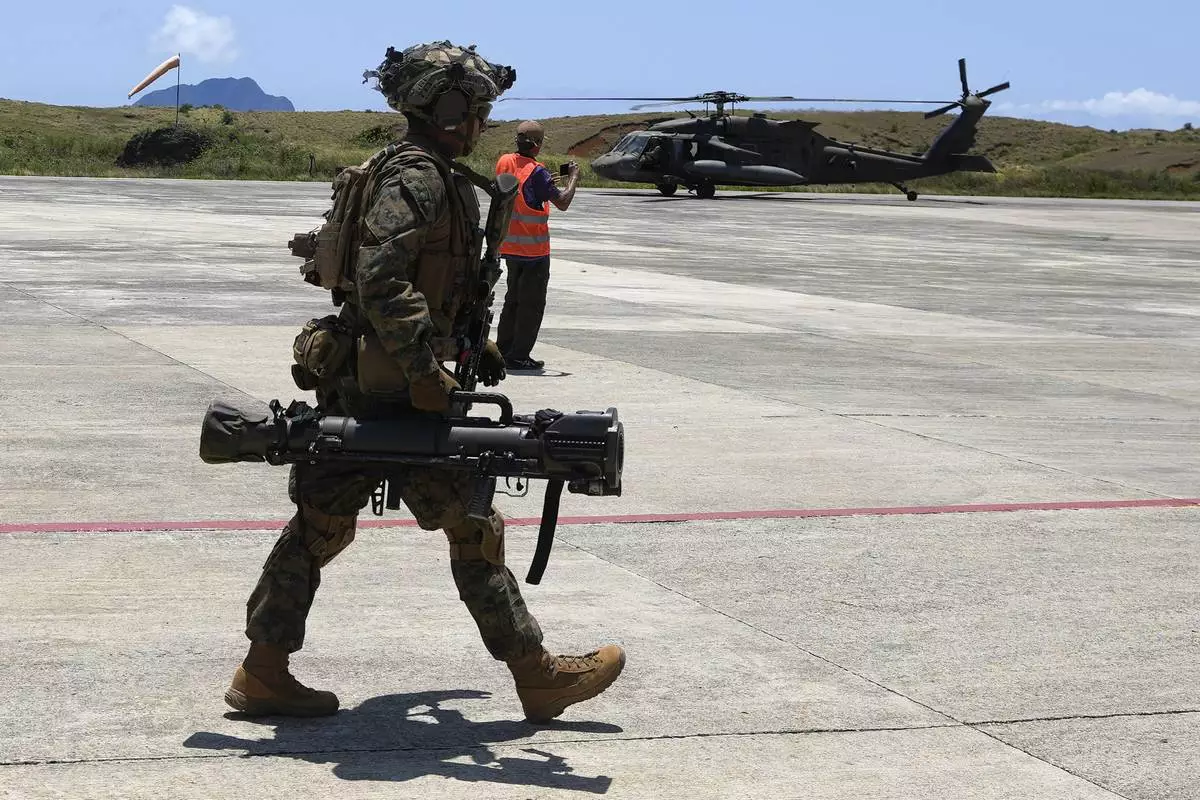
U.S. marines secure an area at the airport of the Philippines' northernmost town of Itbayat, Batanes province during a joint military exercise on Monday, May 6, 2024. American and Filipino marines held annual combat-readiness exercises called Balikatan, Tagalog for shoulder-to-shoulder, in a show of allied military readiness in the Philippines' northernmost town facing southern Taiwan. (AP Photo/Aaron Favila)
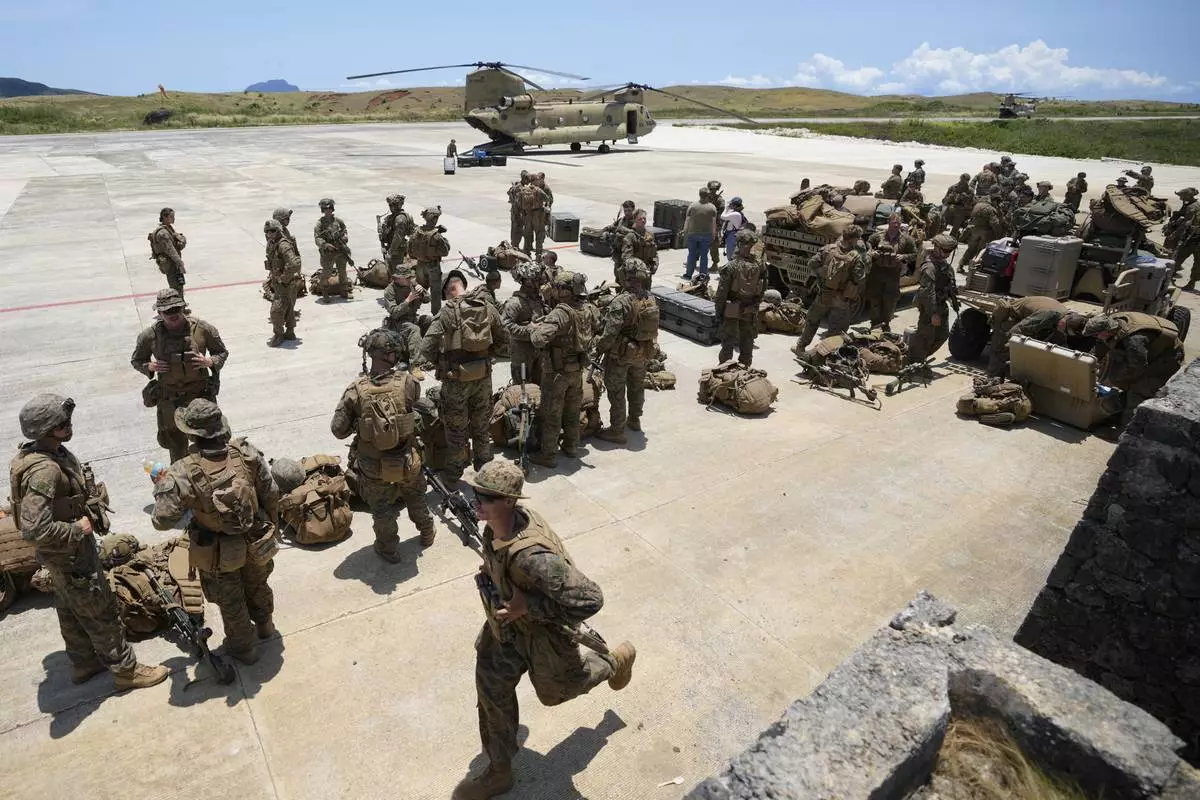
U.S. and Philippine marines wait at the airport of the Philippines' northernmost town of Itbayat, Batanes province during a joint military exercise on Monday, May 6, 2024. American and Filipino marines held annual combat-readiness exercises called Balikatan, Tagalog for shoulder-to-shoulder, in a show of allied military readiness in the Philippines' northernmost town facing southern Taiwan. (AP Photo/Aaron Favila)
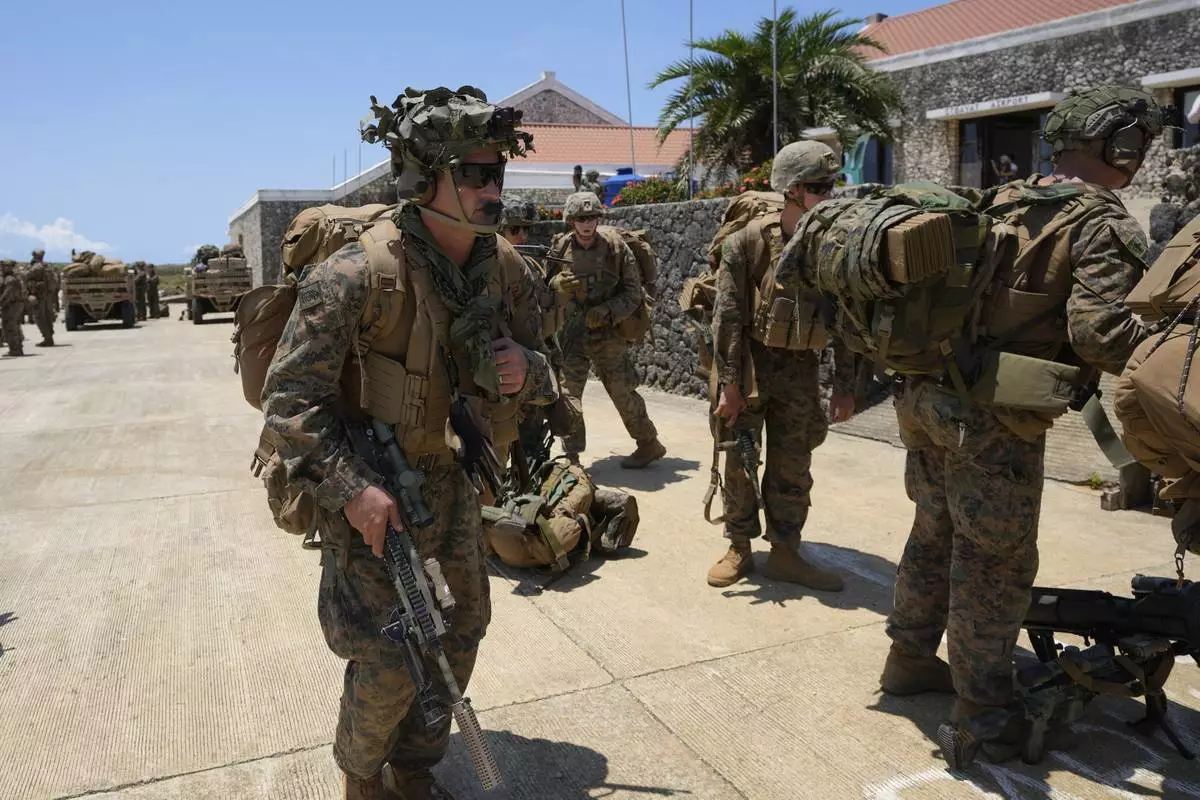
U.S. marines secure an area at the airport of the Philippines' northernmost town of Itbayat, Batanes province during a joint military exercise on Monday, May 6, 2024. American and Filipino marines held annual combat-readiness exercises called Balikatan, Tagalog for shoulder-to-shoulder, in a show of allied military readiness in the Philippines' northernmost town facing southern Taiwan. (AP Photo/Aaron Favila)
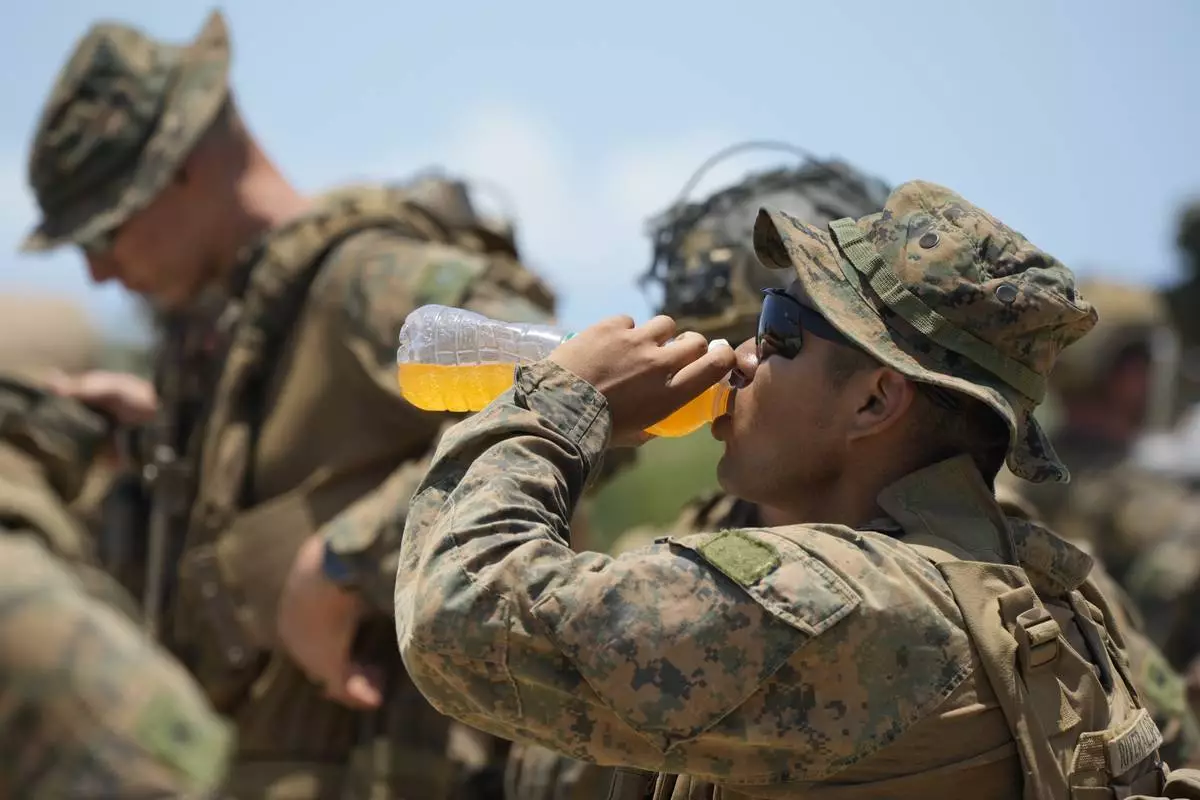
A U.S. marine drinks as he waits under the scorching sun at the airport of the Philippines' northernmost town of Itbayat, Batanes province during a joint military exercise on Monday, May 6, 2024. American and Filipino marines held annual combat-readiness exercises called Balikatan, Tagalog for shoulder-to-shoulder, in a show of allied military readiness in the Philippines' northernmost town facing southern Taiwan. (AP Photo/Aaron Favila)
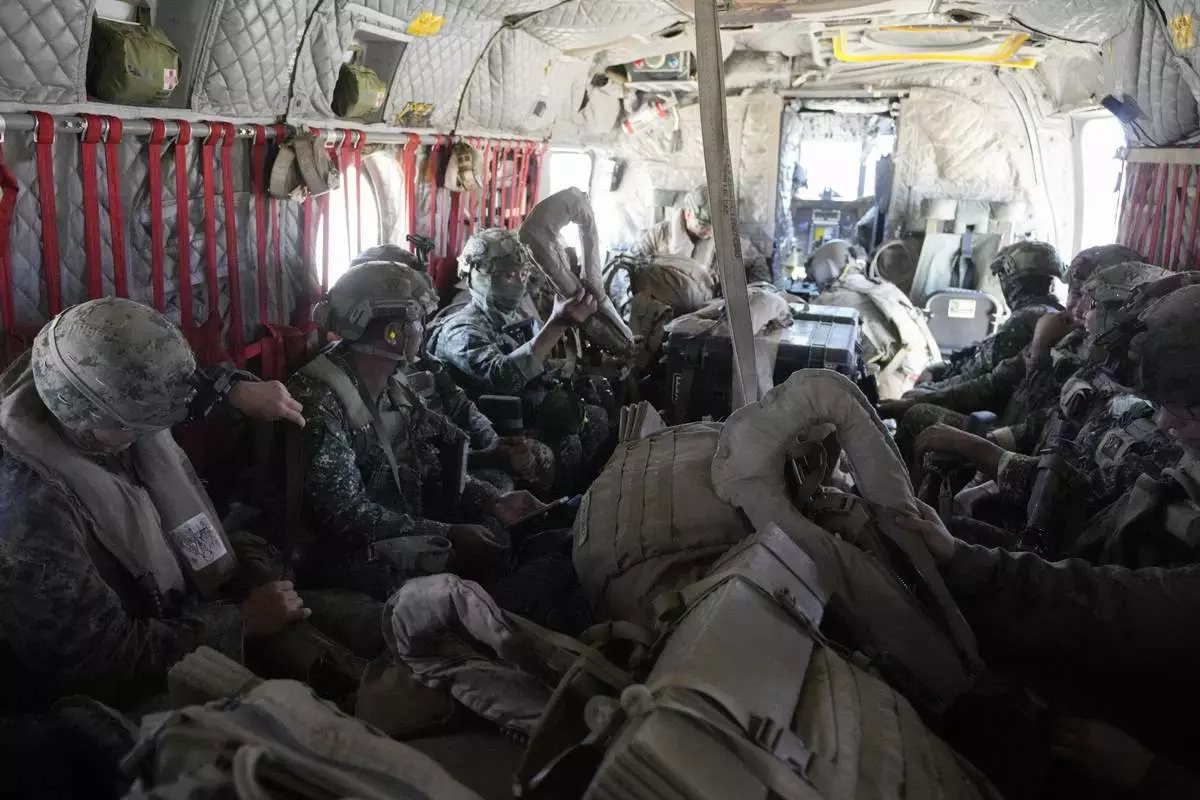
U.S. and Philippine troops ride a U.S. CH-47 helicopter at the Philippines' northernmost town of Itbayat, Batanes province during a joint military exercise on Monday, May 6, 2024. American and Filipino marines held annual combat-readiness exercises called Balikatan, Tagalog for shoulder-to-shoulder, in a show of allied military readiness in the Philippines' northernmost town facing southern Taiwan. (AP Photo/Aaron Favila)
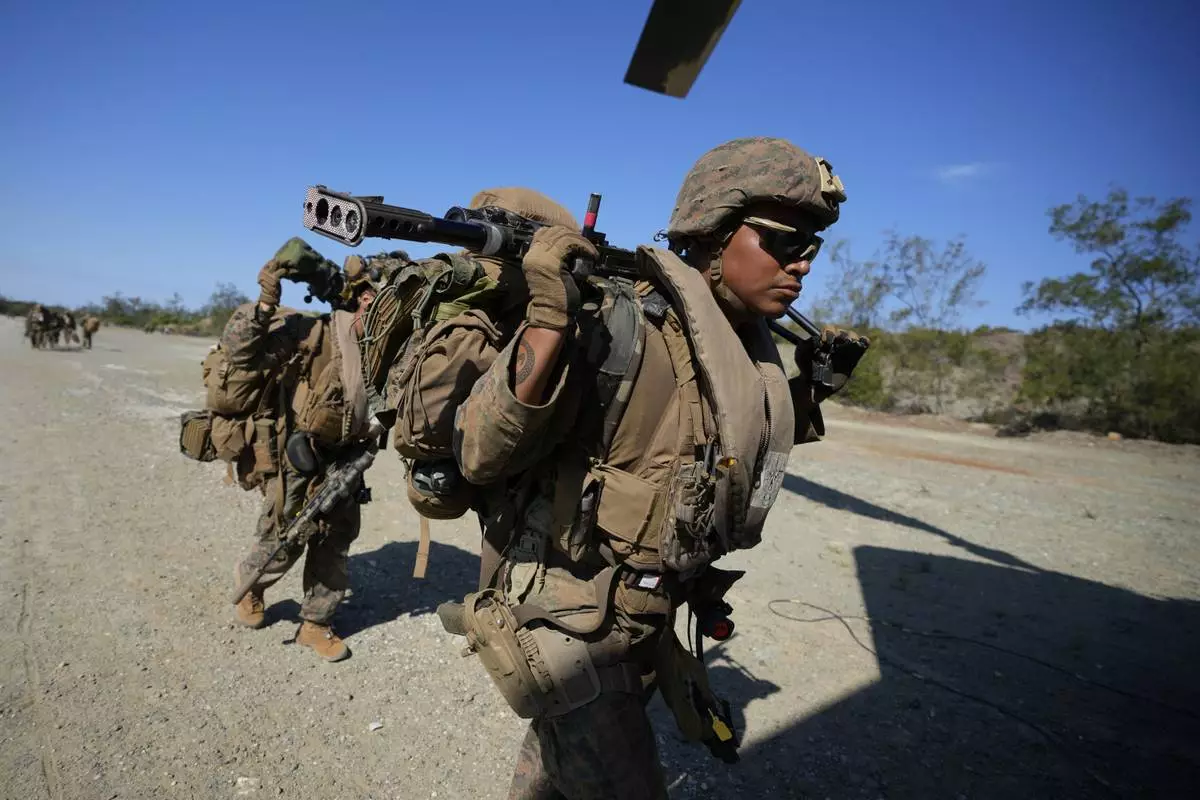
U.S. troopers prepare to board a U.S. Army CH-47s at Paredes Air Station at Pasuquin, Ilocos Norte province as it carries U.S. and Philippine troops during a joint military exercise in northern Philippines on Monday, May 6, 2024. American and Filipino marines held annual combat-readiness exercises called Balikatan, Tagalog for shoulder-to-shoulder, in a show of allied military readiness in the Philippines' northernmost town facing southern Taiwan. (AP Photo/Aaron Favila)
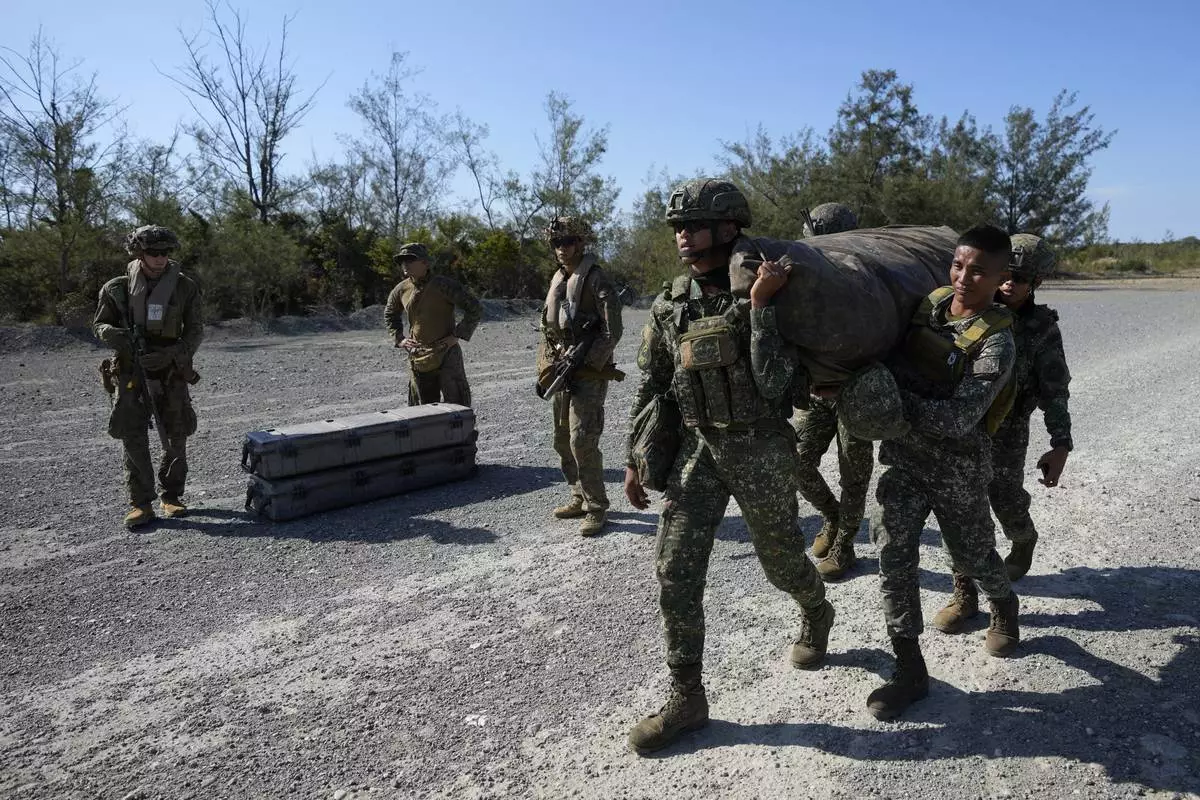
Philippine marines carry equipment beside U.S. marines at Paredes Air Station at Pasuquin, Ilocos Norte province during a joint military exercise in northern Philippines on Monday, May 6, 2024. American and Filipino marines held annual combat-readiness exercises called Balikatan, Tagalog for shoulder-to-shoulder, in a show of allied military readiness in the Philippines' northernmost town facing southern Taiwan. (AP Photo/Aaron Favila)
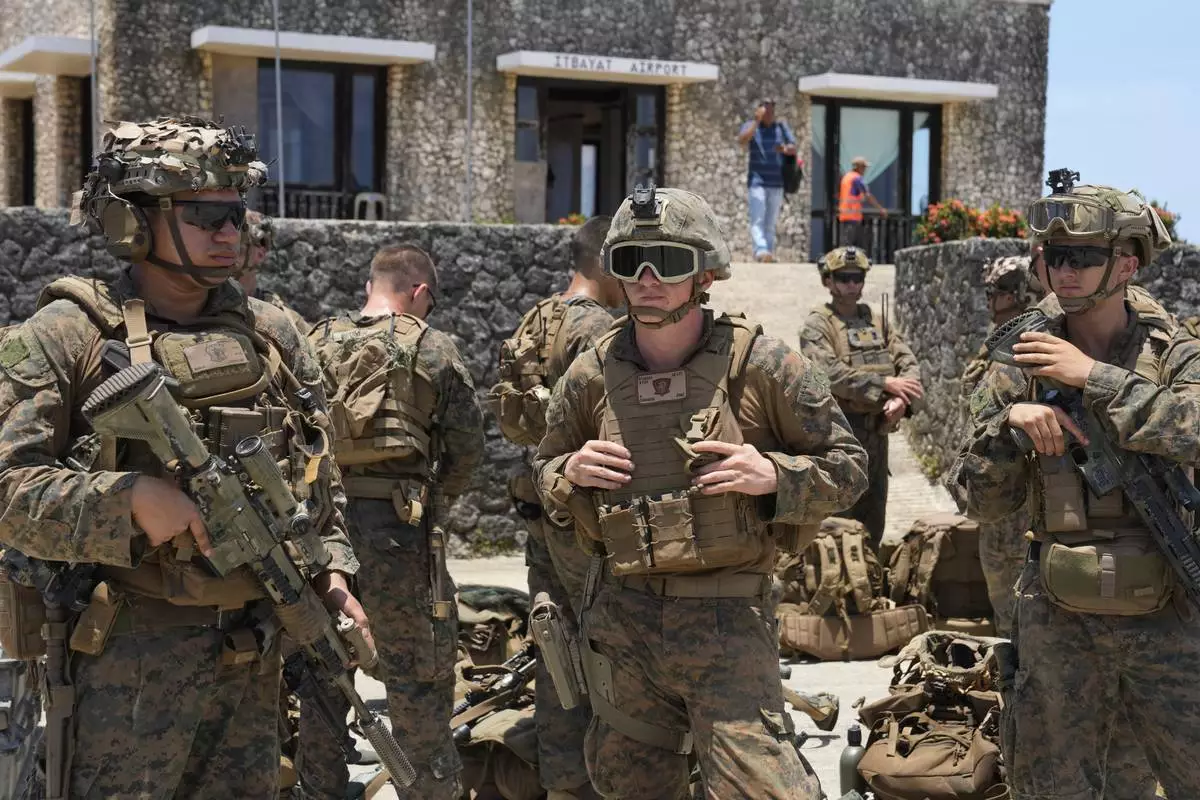
U.S. troopers gather at the airport at the Philippines' northernmost town of Itbayat, Batanes province during a joint military exercise on Monday, May 6, 2024. American and Filipino marines held annual combat-readiness exercises called Balikatan, Tagalog for shoulder-to-shoulder, in a show of allied military readiness in the Philippines' northernmost town facing southern Taiwan. (AP Photo/Aaron Favila)
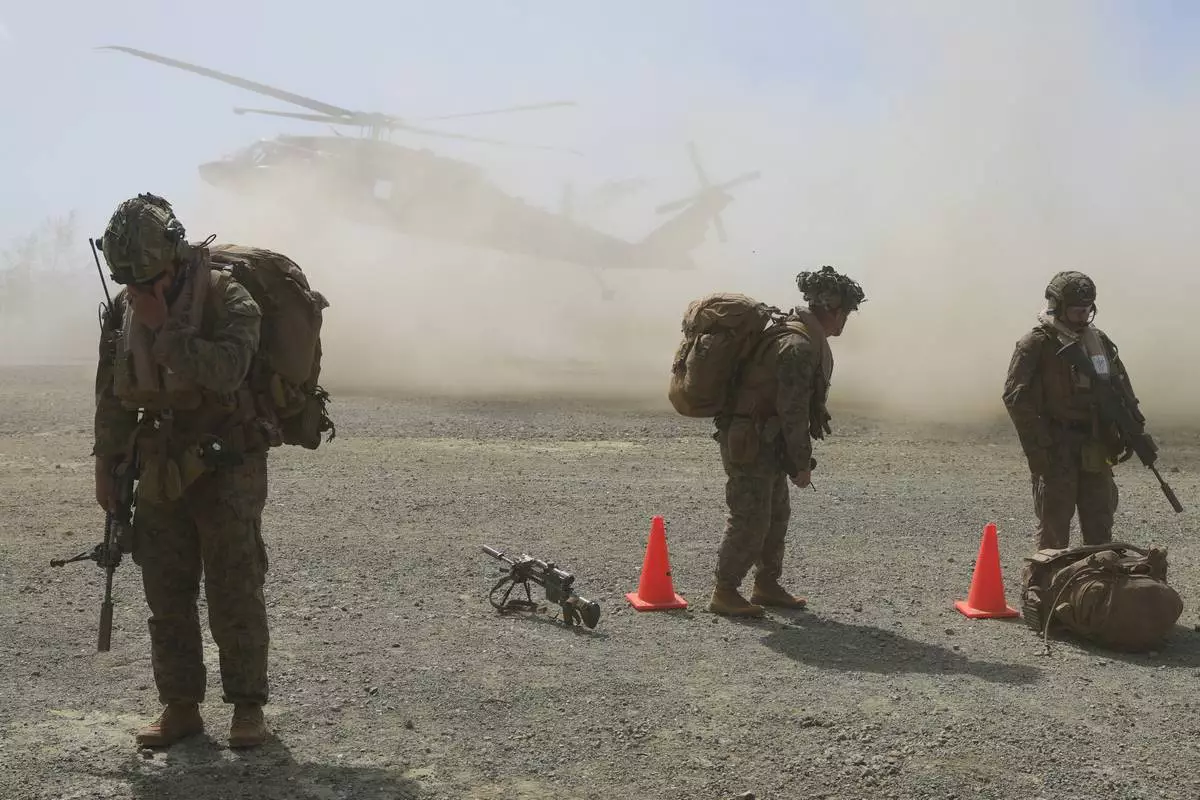
U.S. troops takes cover from dust as a U.S .Army UH-60 Blackhawk helicopter prepares to land at Paredes Air Station at Pasuquin, Ilocos Norte province, during a joint military exercise in northern Philippines on Monday, May 6, 2024. American and Filipino marines held annual combat-readiness exercises called Balikatan, Tagalog for shoulder-to-shoulder, in a show of allied military readiness in the Philippines' northernmost town facing southern Taiwan. (AP Photo/Aaron Favila)
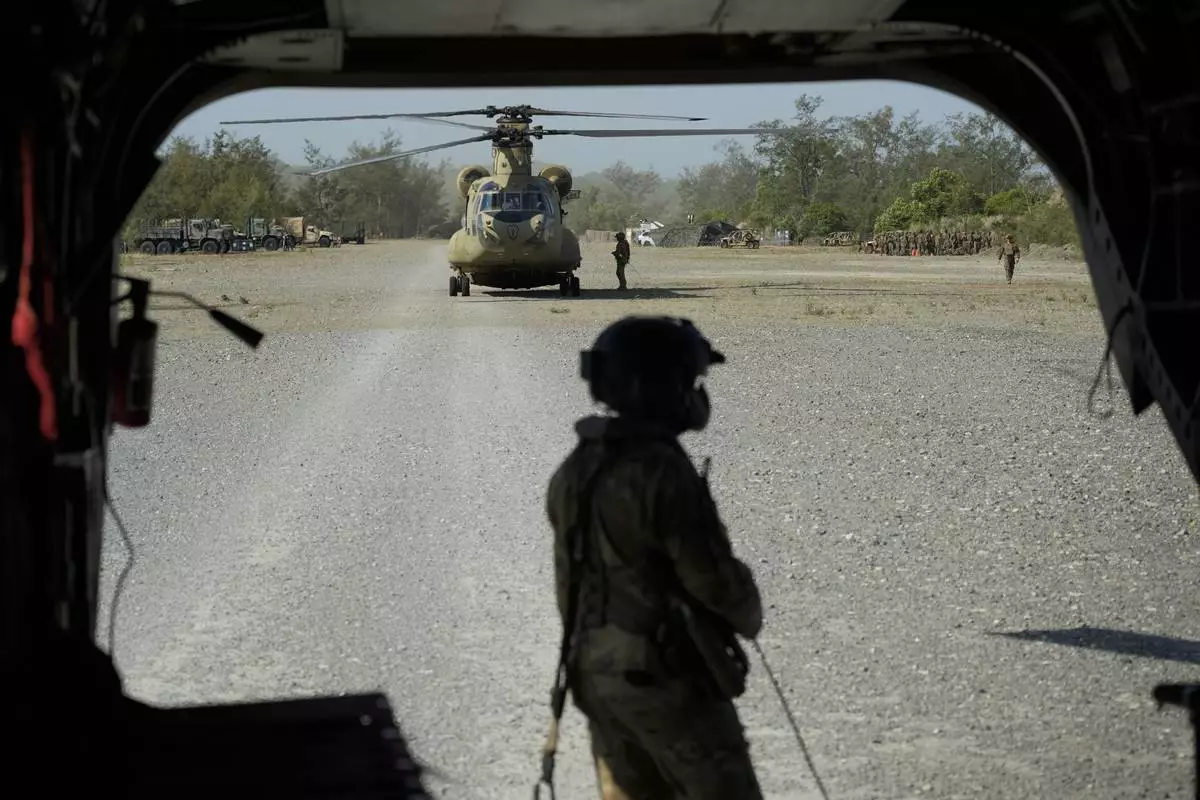
U.S. trooper prepares their U.S. Army CH-47 at Paredes Air Station at Pasuquin, Ilocos Norte province during a joint military exercise in northern Philippines on Monday, May 6, 2024. American and Filipino marines held annual combat-readiness exercises called Balikatan, Tagalog for shoulder-to-shoulder, in a show of allied military readiness in the Philippines' northernmost town facing southern Taiwan. (AP Photo/Aaron Favila)
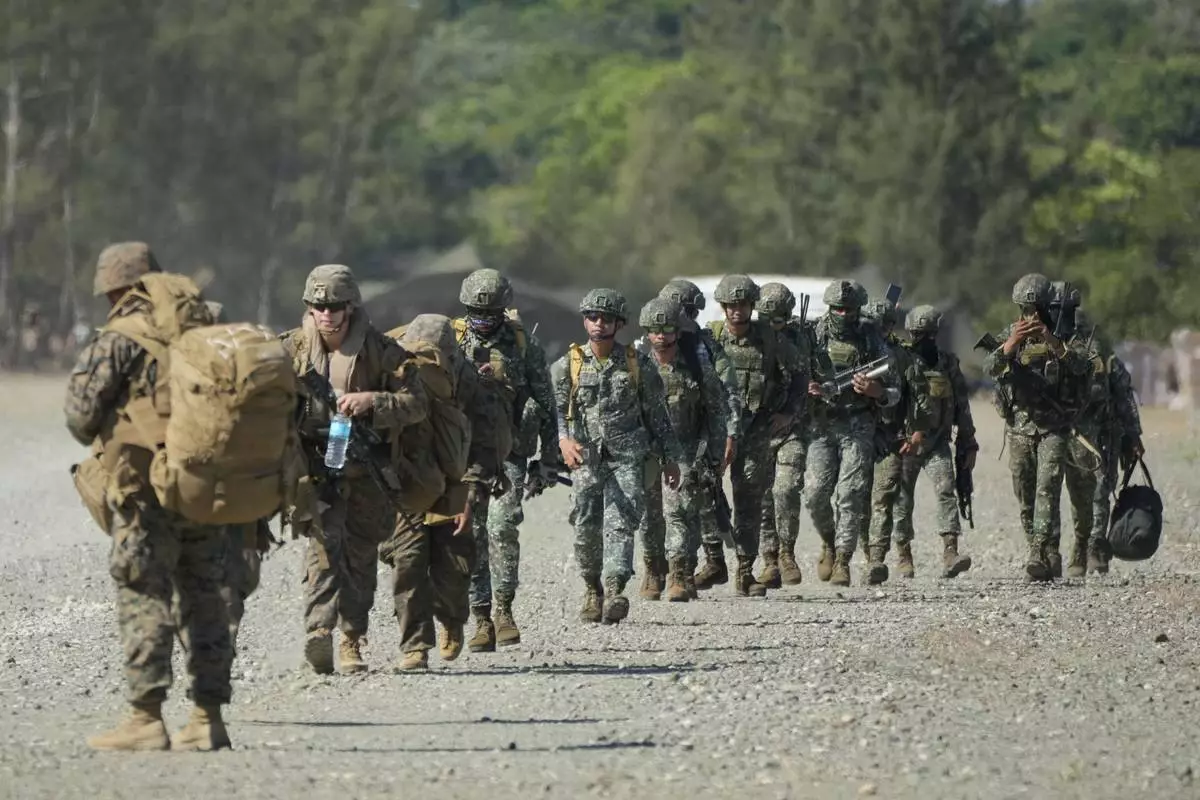
U.S. and Philippine troopers prepare to board U.S. Army CH-47s at Paredes Air Station at Pasuquin, Ilocos Norte province during a joint military exercise in northern Philippines on Monday, May 6, 2024. American and Filipino marines held annual combat-readiness exercises called Balikatan, Tagalog for shoulder-to-shoulder, in a show of allied military readiness in the Philippines' northernmost town facing southern Taiwan. (AP Photo/Aaron Favila)
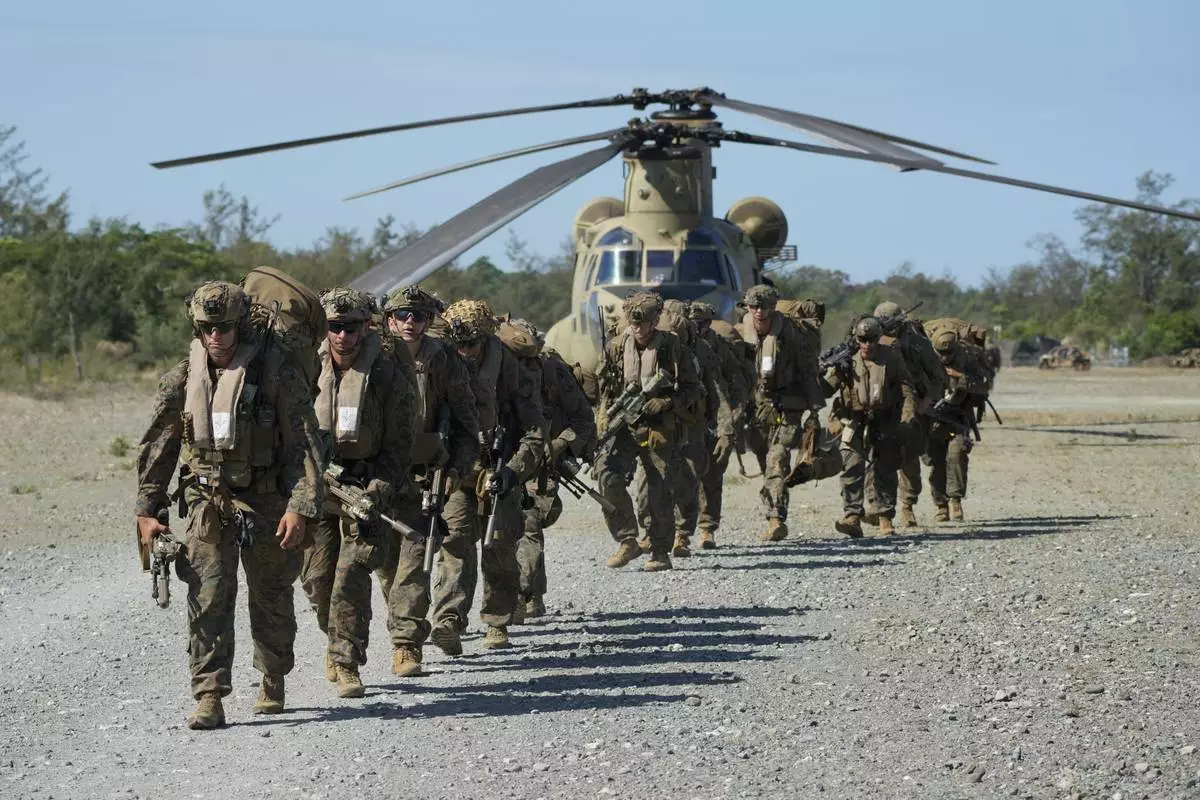
U.S. troopers prepare to board U.S. Army CH-47s at Paredes Air Station at Pasuquin, Ilocos Norte province as it carries U.S. and Philippine troops during a joint military exercise in northern Philippines on Monday, May 6, 2024. American and Filipino marines held annual combat-readiness exercises called Balikatan, Tagalog for shoulder-to-shoulder, in a show of allied military readiness in the Philippines' northernmost town facing southern Taiwan. (AP Photo/Aaron Favila)
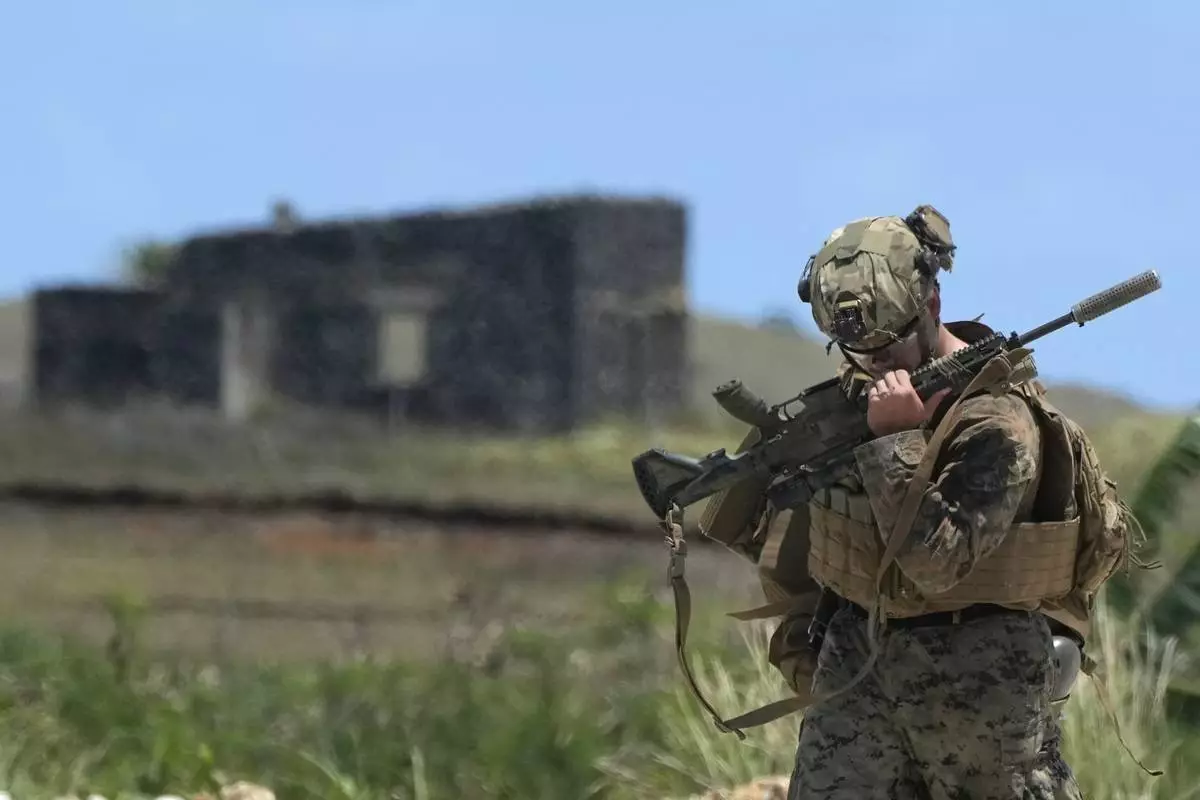
A U.S. trooper checks his rifle as they land at the Philippines' northernmost town of Itbayat, Batanes province during a joint military exercise on Monday, May 6, 2024. American and Filipino marines held annual combat-readiness exercises called Balikatan, Tagalog for shoulder-to-shoulder, in a show of allied battle readiness in the Philippines' northernmost island town of Itbayat along the strategic Bashi Channel off southern Taiwan. (AP Photo/Aaron Favila)
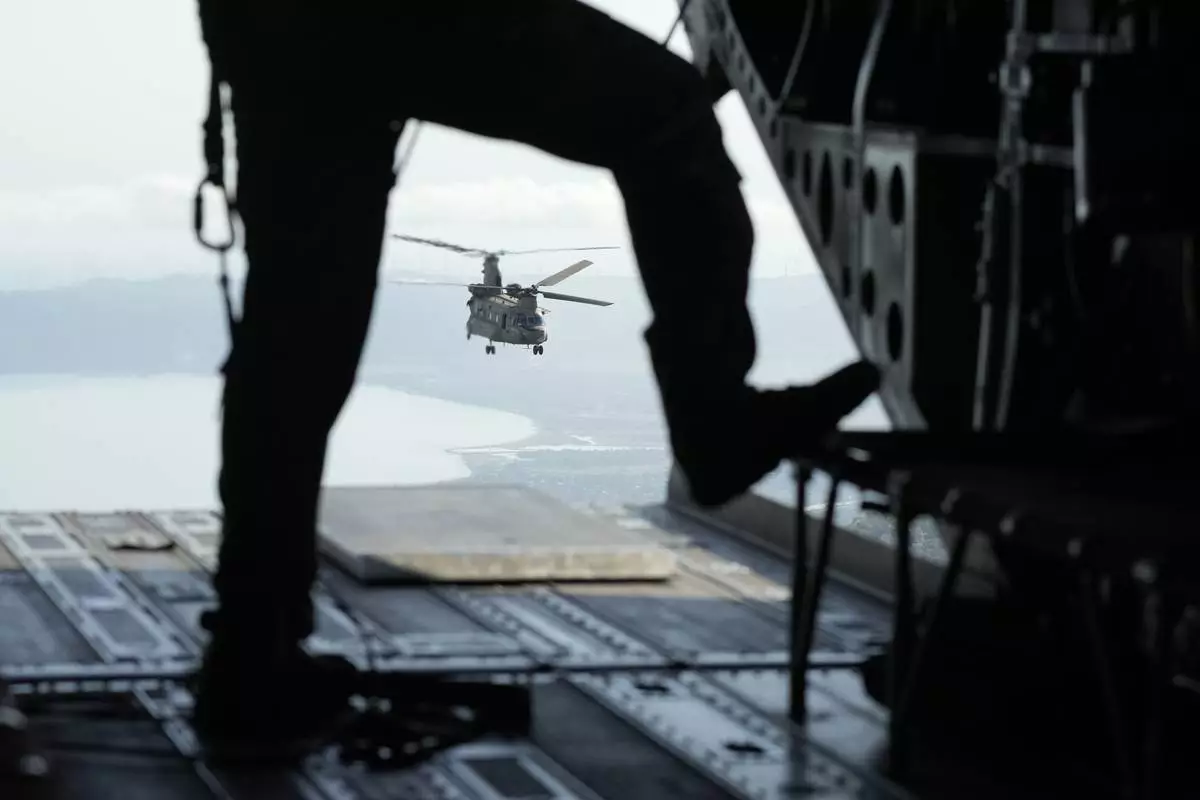
A U.S. Army CH-47 flies over Ilocos Norte province during a joint military exercise in northern Philippines on Monday, May 6, 2024. American and Filipino marines held annual combat-readiness exercises called Balikatan, Tagalog for shoulder-to-shoulder, in a show of allied battle readiness in the Philippines' northernmost island town of Itbayat along the strategic Bashi Channel off southern Taiwan. (AP Photo/Aaron Favila)
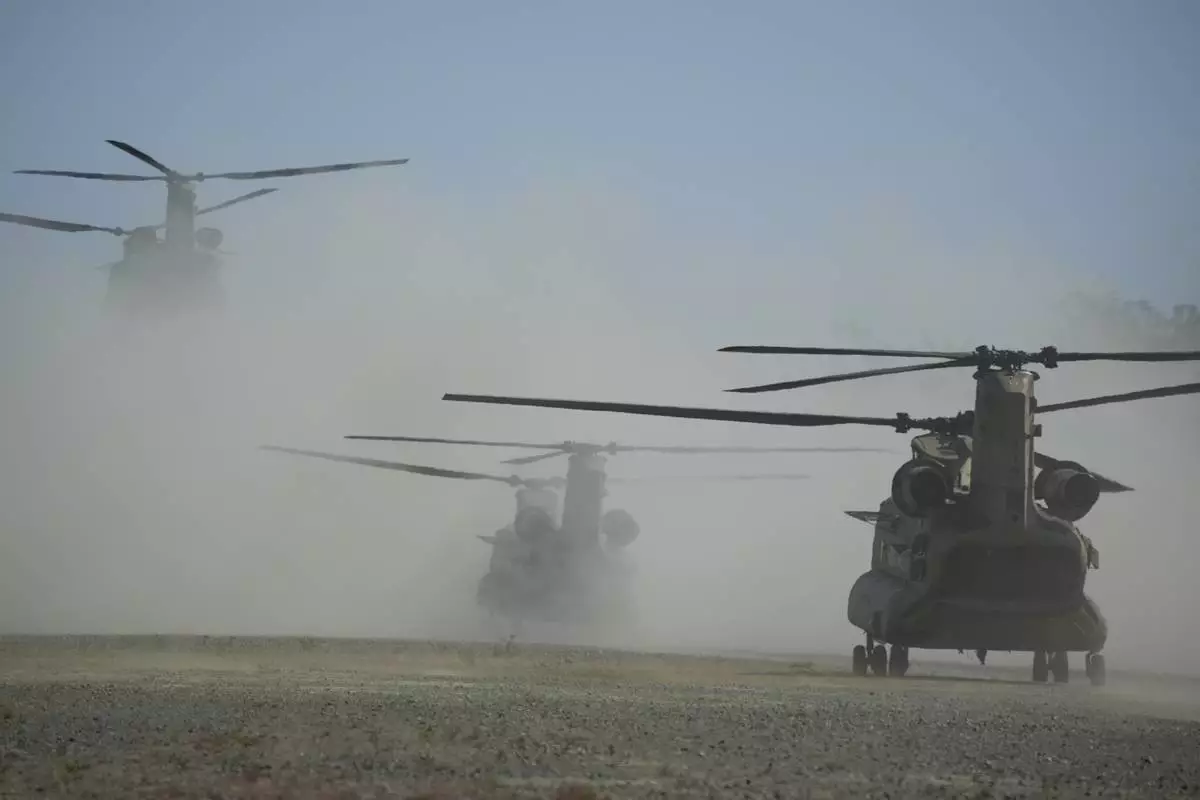
U.S. Army CH-47s takes off at Paredes Air Station at Pasuquin, Ilocos Norte province as it carries the U.S. and Philippine troops during a joint military exercise in northern Philippines on Monday, May 6, 2024. American and Filipino marines held annual combat-readiness exercises called Balikatan, Tagalog for shoulder-to-shoulder, in a show of allied battle readiness in the Philippines' northernmost island town of Itbayat along the strategic Bashi Channel off southern Taiwan. (AP Photo/Aaron Favila)

U.S. and Philippine troopers prepare to board a U.S. Army CH-47 helicopter at the airport at the Philippines' northernmost town of Itbayat, Batanes province during a joint military exercise on Monday, May 6, 2024. American and Filipino marines held annual combat-readiness exercises called Balikatan, Tagalog for shoulder-to-shoulder, in a show of allied battle readiness in the Philippines' northernmost island town of Itbayat along the strategic Bashi Channel off southern Taiwan. (AP Photo/Aaron Favila)
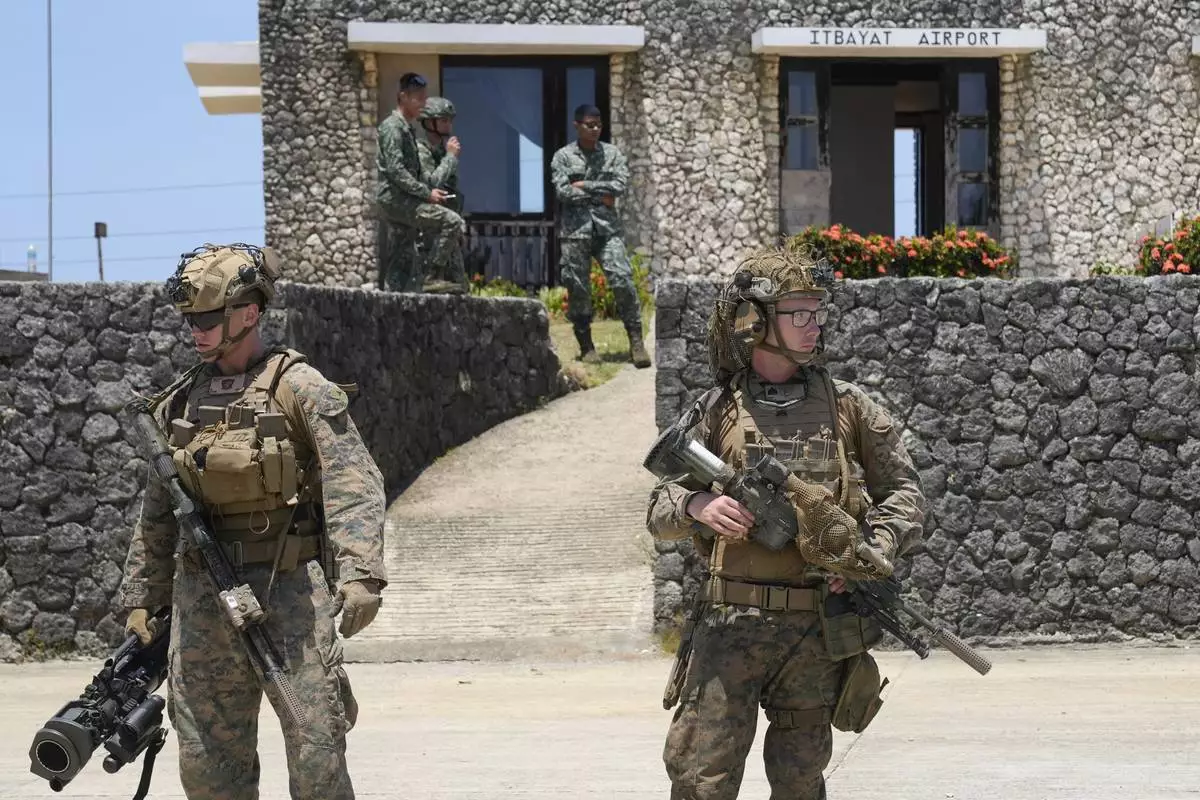
U.S. troopers secure an airport at the Philippines' northernmost town of Itbayat, Batanes province during a joint military exercise on Monday, May 6, 2024. American and Filipino marines held annual combat-readiness exercises called Balikatan, Tagalog for shoulder-to-shoulder, in a show of allied battle readiness in the Philippines' northernmost island town of Itbayat along the strategic Bashi Channel off southern Taiwan. (AP Photo/Aaron Favila)
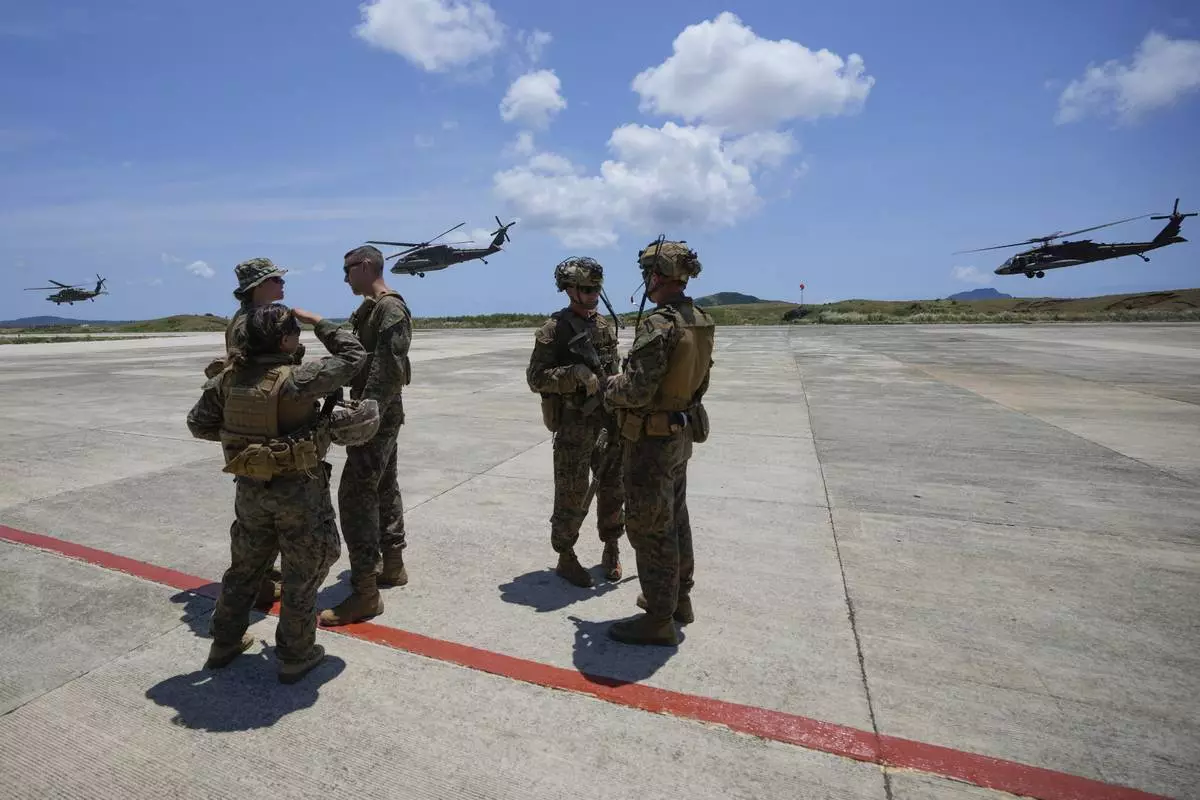
U.S. Army UH-60 helicopters take off after securing the airport at the Philippines' northernmost town of Itbayat, Batanes province during a joint military exercise on Monday, May 6, 2024. American and Filipino marines held annual combat-readiness exercises called Balikatan, Tagalog for shoulder-to-shoulder, in a show of allied battle readiness in the Philippines' northernmost island town of Itbayat along the strategic Bashi Channel off southern Taiwan. (AP Photo/Aaron Favila)
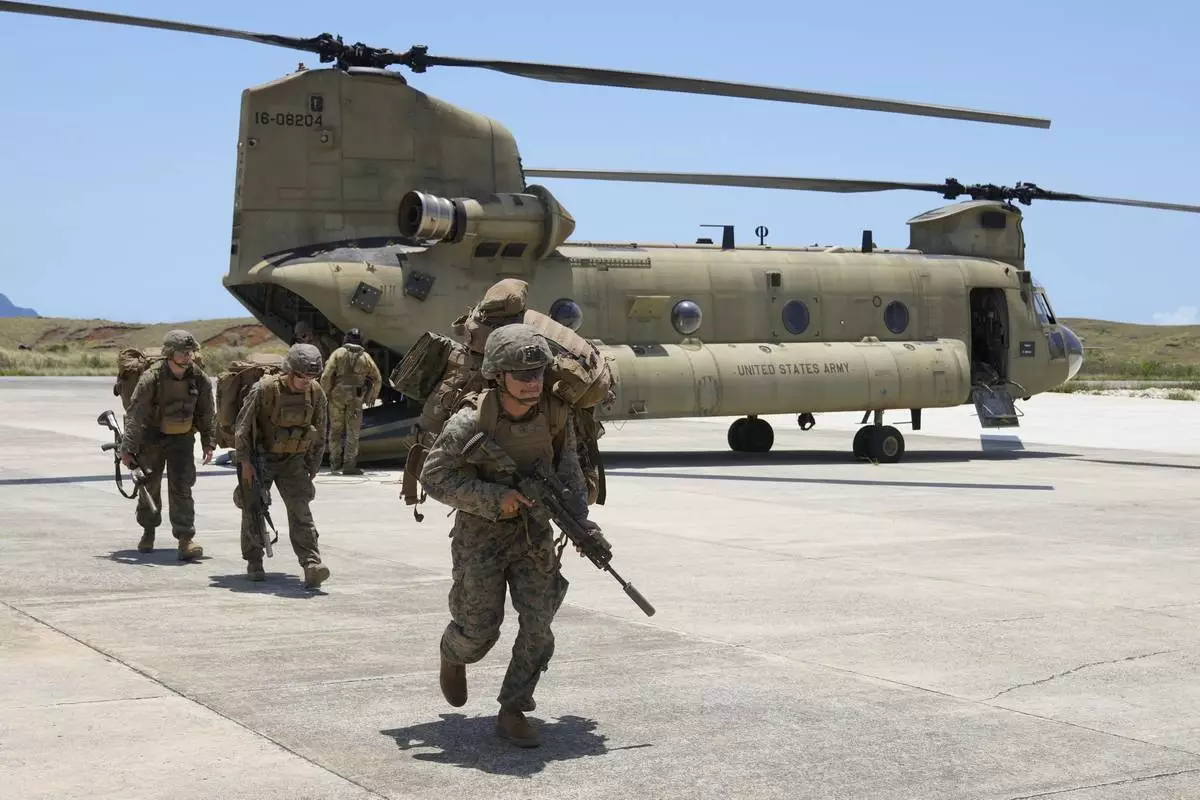
U.S. troopers alight from a U.S. Army CH-47 carrying American and Philippine troops as it lands at the Philippines' northernmost town of Itbayat, Batanes province during a joint military exercise on Monday, May 6, 2024. American and Filipino marines held annual combat-readiness exercises called Balikatan, Tagalog for shoulder-to-shoulder, in a show of allied battle readiness in the Philippines' northernmost island town of Itbayat along the strategic Bashi Channel off southern Taiwan. (AP Photo/Aaron Favila)





























